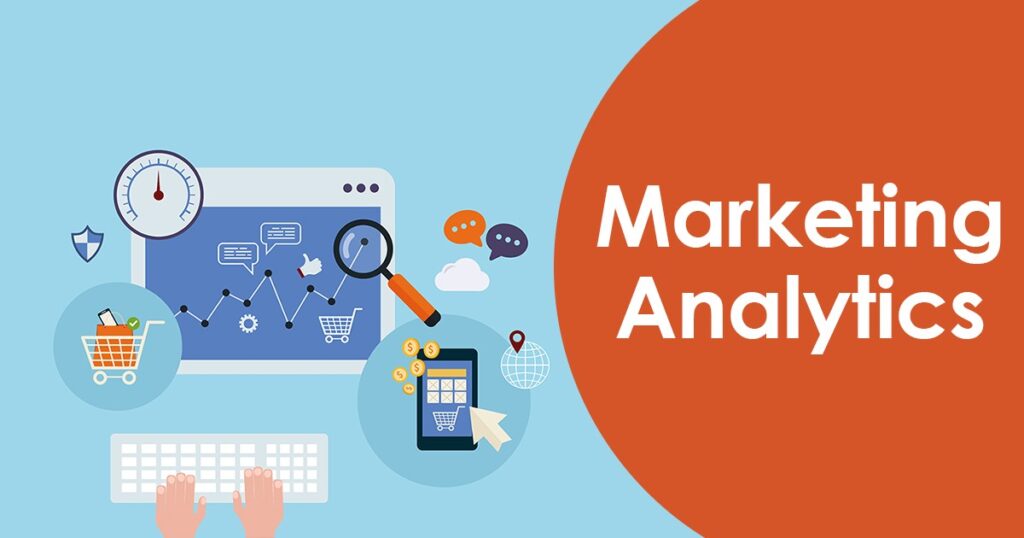Advanced Marketing Analytics Tools and Techniques
In the rapidly evolving landscape of digital marketing, harnessing the full potential of analytics tools is essential for driving informed decisions, optimizing campaigns, and achieving measurable results. From sophisticated data analysis to predictive modeling, advanced marketing analytics tools empower marketers to delve deeper into consumer behavior, enhance targeting precision, and maximize ROI. Here’s a comprehensive exploration of some cutting-edge analytics tools and techniques revolutionizing the marketing industry:

1. Google Analytics 360 Suite
Why Use: Google Analytics 360 Suite offers a comprehensive suite of tools designed to meet the needs of enterprise-level businesses. It includes advanced features such as enhanced data collection, custom funnel analysis, and integration with Google BigQuery for real-time data insights. Marketers can leverage Google Analytics 360 Suite to gain a holistic view of customer journeys across channels and optimize marketing strategies accordingly.
2. Adobe Analytics
Why Use: Adobe Analytics provides robust analytics capabilities that enable marketers to track, analyze, and visualize customer interactions across various touchpoints. It offers advanced segmentation, predictive analytics, and real-time data streaming features. Adobe Analytics empowers marketers to uncover actionable insights, personalize customer experiences, and drive engagement through data-driven decision-making.
3. IBM Watson Analytics
Why Use: IBM Watson Analytics leverages artificial intelligence and machine learning to deliver predictive analytics and data visualization capabilities. It allows marketers to explore data, uncover patterns, and generate predictive models without requiring deep technical expertise. IBM Watson Analytics enables businesses to anticipate customer needs, optimize marketing campaigns, and enhance overall operational efficiency.
4. Tableau
Why Use: Tableau is a powerful data visualization tool that transforms complex data into interactive dashboards and visualizations. It integrates with multiple data sources, including spreadsheets, databases, and cloud services, to provide real-time insights. Tableau enables marketers to create compelling visual narratives, identify trends, and communicate data-driven findings effectively across teams and stakeholders.
5. HubSpot Analytics
Why Use: HubSpot Analytics offers robust reporting and analytics tools tailored for inbound marketing strategies. It provides insights into website performance, lead generation metrics, email marketing effectiveness, and more. HubSpot Analytics enables marketers to track the entire customer journey, optimize conversion paths, and measure the ROI of marketing efforts in real-time.
6. R and Python for Data Analysis
Why Use: R and Python are widely used programming languages for statistical analysis, data manipulation, and predictive modeling. Marketers can leverage these languages and associated libraries (like pandas, numpy, and scikit-learn) to perform advanced data analysis, build predictive models, and automate data-driven processes. R and Python offer flexibility and scalability for handling large datasets and conducting complex statistical analyses.
7. Advanced Segmentation and Customer Profiling
Why Use: Advanced segmentation techniques enable marketers to divide their audience into granular segments based on demographics, behaviors, and preferences. By leveraging customer profiling tools, marketers can create personalized marketing campaigns, tailor content to specific audience segments, and deliver relevant messages at each stage of the customer journey.
8. Predictive Analytics and Machine Learning
Why Use: Predictive analytics and machine learning algorithms analyze historical data to forecast future trends, behaviors, and outcomes. These tools enable marketers to predict customer churn, identify high-value prospects, and optimize marketing campaigns for maximum impact. By leveraging predictive analytics, marketers can make data-driven decisions that drive growth and improve marketing ROI.
9. Social Media Analytics Platforms
Why Use: Social media analytics platforms like Sprout Social, Hootsuite Insights, and Buffer Analytics provide in-depth insights into social media performance metrics. Marketers can track engagement, monitor brand mentions, analyze sentiment, and measure the effectiveness of social media campaigns. These tools help marketers understand audience preferences, optimize content strategy, and foster meaningful interactions on social platforms.
10. Cross-Channel Attribution Models
Why Use: Cross-channel attribution models attribute conversions and sales to specific marketing touchpoints across multiple channels. Tools like Google Attribution, Adobe Analytics Attribution, and Nielsen Visual IQ offer insights into the impact of each marketing channel on the customer journey. By understanding attribution patterns, marketers can allocate budgets effectively, optimize channel mix, and maximize overall marketing ROI.
Embrace Advanced Analytics for Marketing Success
By embracing these advanced marketing analytics tools and techniques, marketers can unlock actionable insights, enhance decision-making capabilities, and drive sustainable business growth. Whether you’re analyzing customer behavior, optimizing digital campaigns, or predicting market trends, leveraging data-driven strategies is essential in today’s competitive landscape.
Stay tuned for more insights and practical tips on harnessing the power of analytics to elevate your marketing efforts. Explore innovative approaches, experiment with new tools, and continuously evolve your analytics strategy to stay ahead of the curve and achieve your marketing goals effectively.


